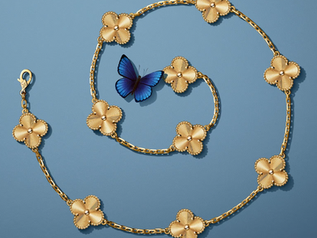EL GRECO
El Greco (1541-1614) is one of the most singular and influential artists in the history of Western art, known for his unique style blending Mannerism and an expressiveness that prefigured modern art.
His slender figures, vibrant colors and bold compositions reflect a deeply spiritual and personal vision, which continues to fascinate and inspire artists and art lovers.

Born Doménikos Theotokopoulos in 1541 in Candia, Crete (present-day Heraklion), El Greco grew up in an environment steeped in Byzantine culture. He began his career as an icon painter in the traditional Orthodox style. Seeking to broaden his artistic horizons, he traveled to Italy in 1567, where he studied the works of the great Renaissance masters, notably Titian and Michelangelo. These influences marked a decisive turning point in his work, while also encouraging him to develop a distinct visual language.
During his stay in Venice, El Greco absorbed the techniques of the Venetian masters, particularly the use of color and light, characteristic of the Venetian school. His early Italian works, such as The Healing of the Blind Man (circa 1570), already demonstrate his interest in dramatic compositions and marked contrasts. He then moved to Rome, where he became closer to the Mannerists and experimented with more stylized forms and complex perspectives.
In 1577, El Greco moved to Toledo, Spain, where he found an ideal environment for his deeply religious art. This period marked the peak of his career, with monumental works such as The Burial of Count Orgaz (1586-1588), considered one of his masterpieces. This painting combines celestial and terrestrial elements in a harmonious and theatrical composition, showcasing his talent for capturing emotional and spiritual intensity.

El Greco's style, characterized by elongated figures, dynamic poses, and a bold palette, reflects his mystical and transcendental vision.
Works such as The View of Toledo (circa 1600) and The Opening of the Fifth Seal (1608-1614) illustrate his innovative approach, which departed from the conventions of his time to favor dramatic expressiveness. These paintings, sometimes interpreted as precursors to Expressionism, continue to captivate with their modernity.
In addition to his religious paintings, El Greco produced portraits of great psychological intensity, such as The Knight with His Hand on His Breast (circa 1580). These works reveal his talent for capturing the individuality of his subjects while maintaining a spiritual dimension. His portraits, imbued with an almost supernatural light, demonstrate his interest in the duality between the physical and spiritual worlds.
Toward the end of his life, El Greco adopted an even more daring style, characterized by increasingly distorted forms and a radical use of color. Although his work was neglected after his death, it was rediscovered in the 19th century, becoming a source of inspiration for modern artists such as Picasso, Cézanne, and the Expressionists.
On the art market, El Greco's works are among the most sought-after of the Late Renaissance.
In 2012, Saint Dominic in Prayer sold for $13.9 million, a record for the artist. His drawings, although rare, are also highly prized for their historical significance and their connection to his major paintings.
El Greco's legacy lies in his ability to blend the traditions of Byzantine, Venetian, and Mannerist art to create a deeply personal and visionary style. His works, held in prestigious museums such as the Prado in Madrid and the Metropolitan Museum of Art in New York, continue to fascinate with their spiritual depth and aesthetic audacity.
Exploring El Greco's art is to delve into a universe where the divine and the human meet in compositions of unique emotional and visual power. If you own a work or object inspired by this visionary artist, our online appraisal service can help you discover its value. El Greco, with his mystical vision and creative genius, remains a pivotal figure in art history.

How does it work ?
Submit your work
Upload clear, detailed photos of your artwork directly to our platform. Add additional information (dimensions, history, signature, etc.) to help our experts better evaluate it.
Analyzed
by our experts
Your request is forwarded to our network of expert partners specializing in different periods and artistic styles. They carefully study each work to provide an accurate estimate.
Receive your estimate
In less than 48 hours, you will receive a detailed response including an estimate of the value of your item.





